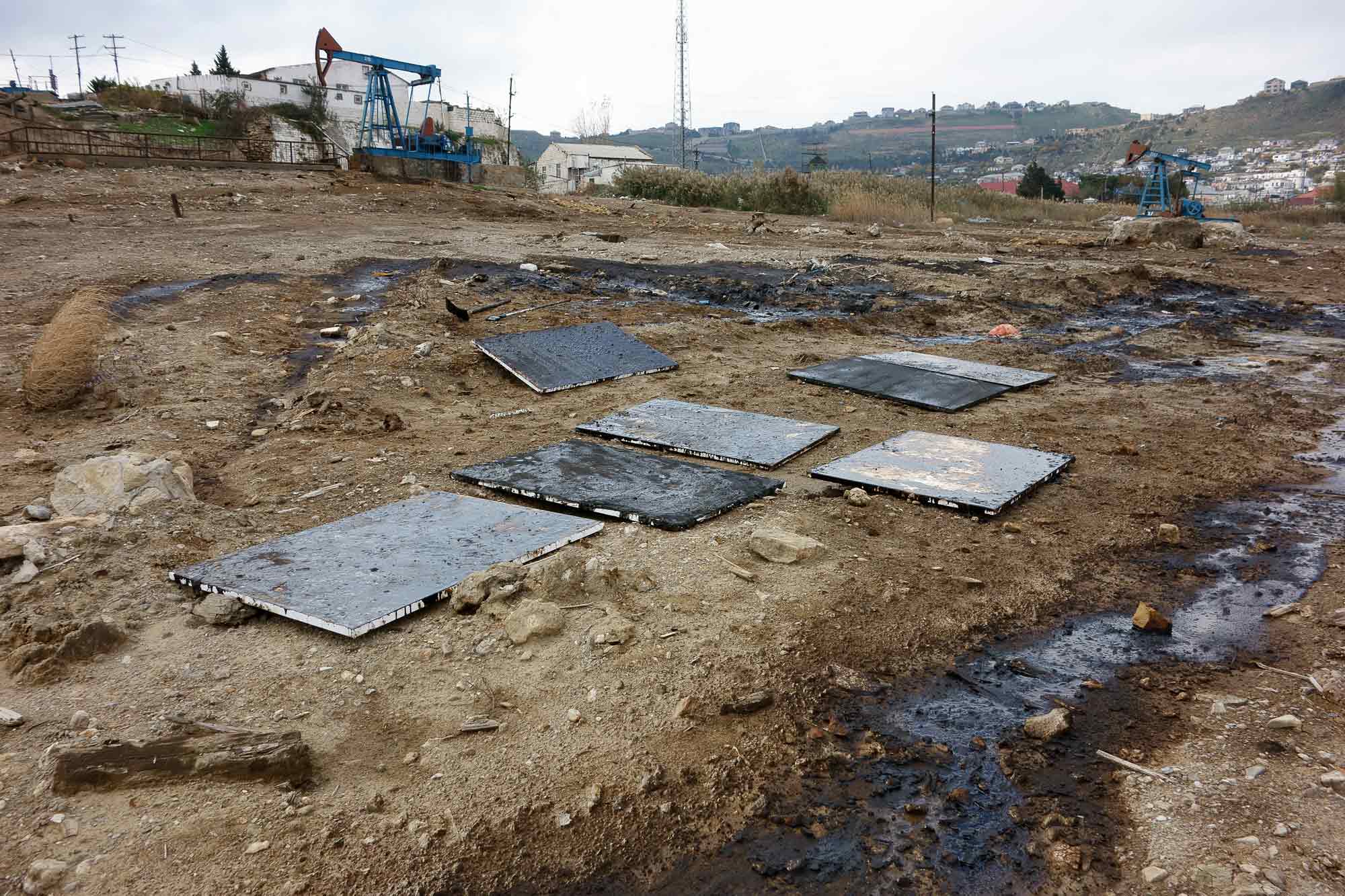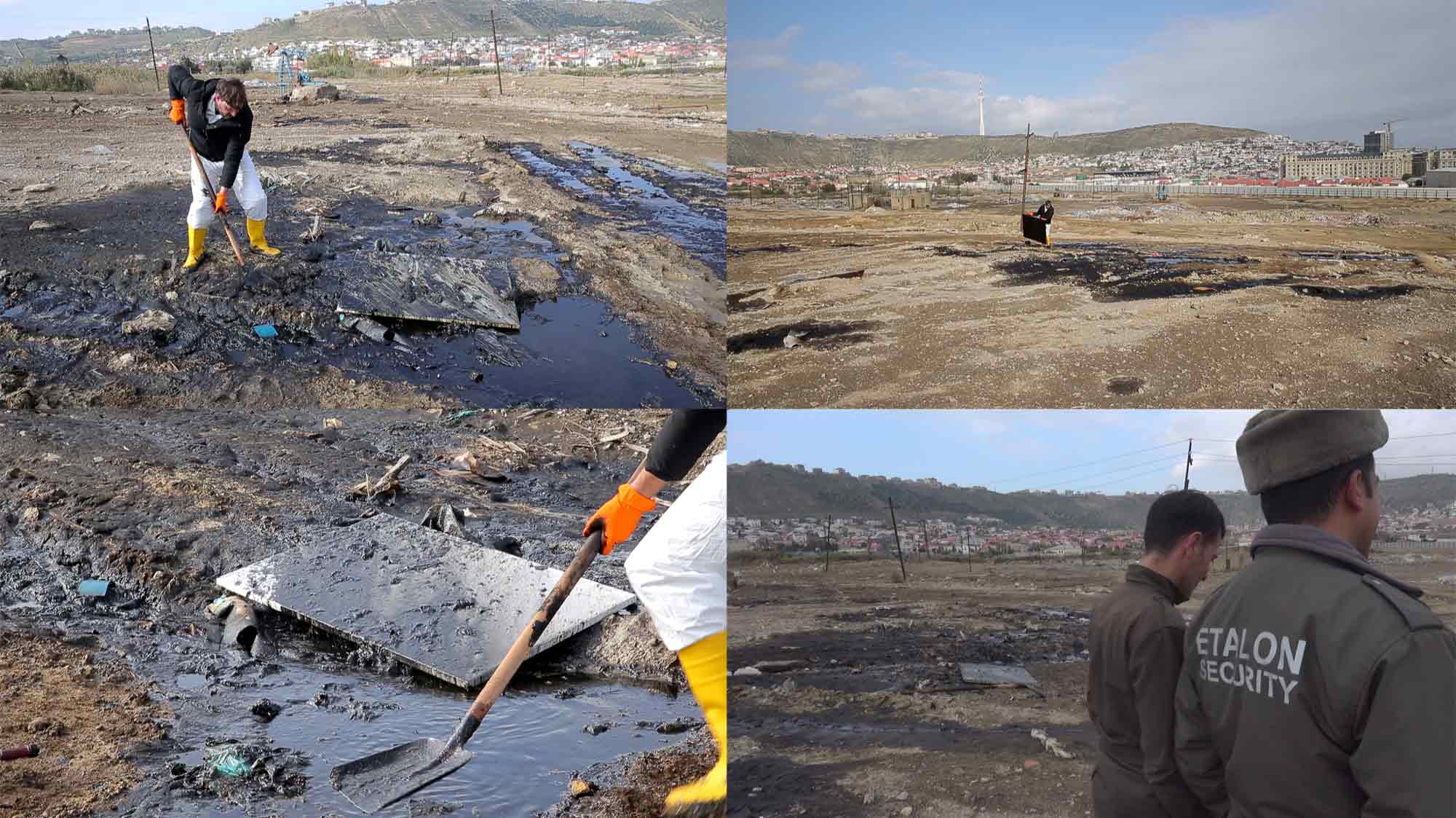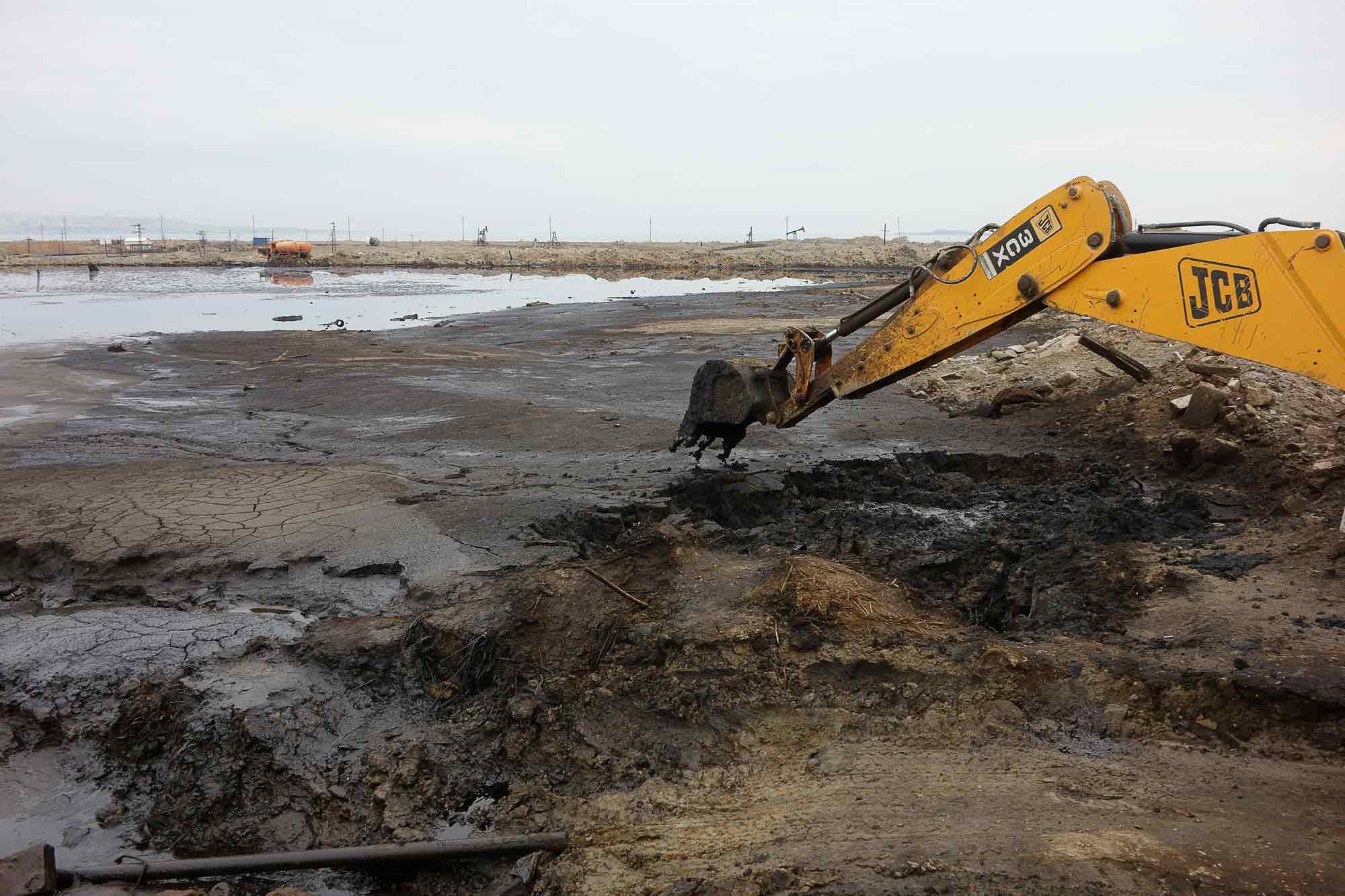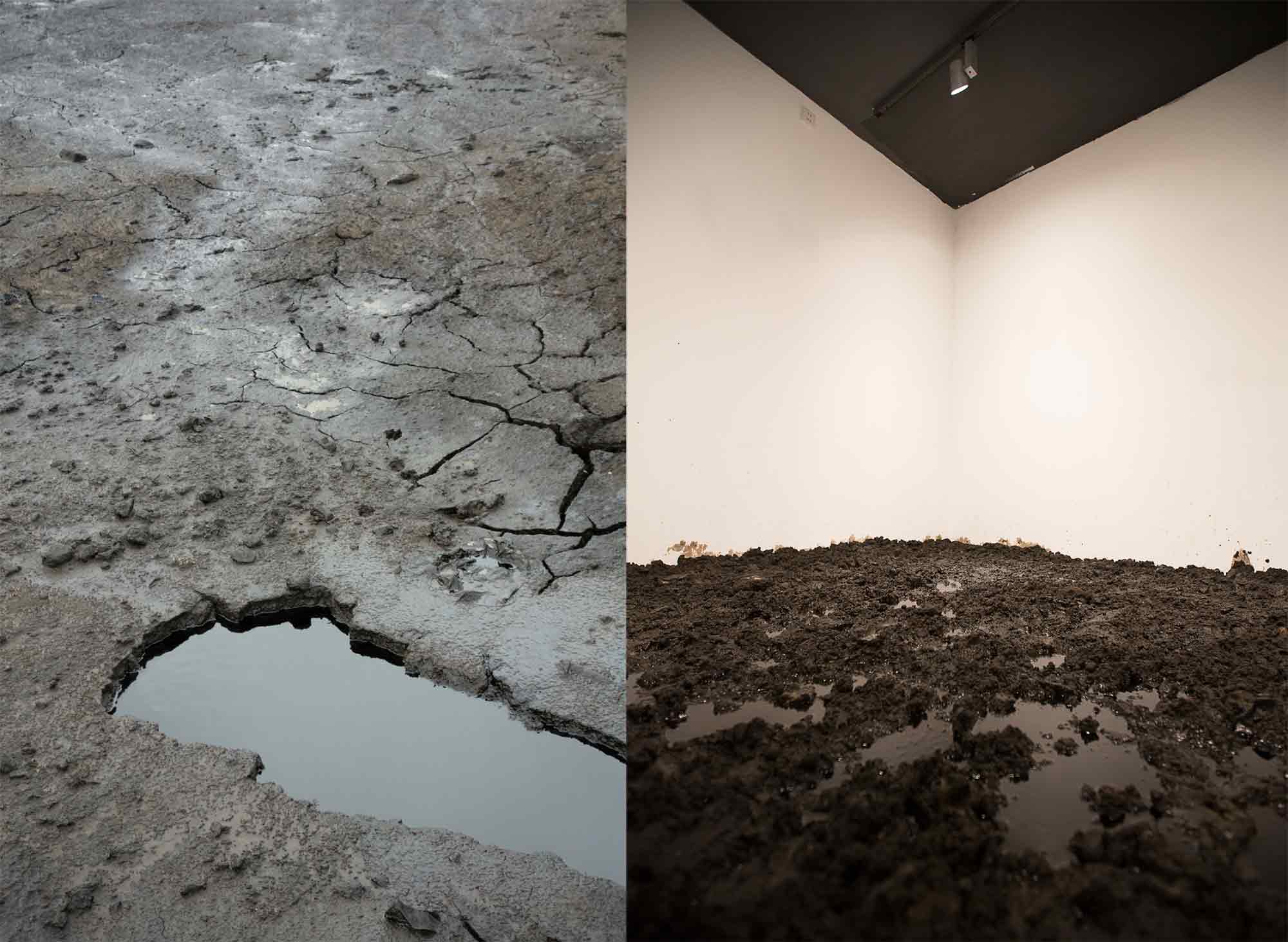- Login
Critical Spatial Practice






The works of the series ‘Viscous Myths’ arose from an investigation of the Absheron Peninsula in Azerbaijan – the landmass in the Caspian Sea, which is held to be the place of origin of industrial oil production.
The works of the series ‘Viscous Myths’ arose from an investigation of the Absheron Peninsula in Azerbaijan – the landmass in the Caspian Sea, which is held to be the place of origin of industrial oil production. Here, where burning fountains of oil have spurted from the ground for thousands of years and nurtured Zoroastrian fire cults, the first industrial oil drilling was carried out in the nineteenth century. And from here the bigger part of the oil produced worldwide was shipped in the beginning of the twentieth century. Thus the Absheron Peninsula, the subject of many ancient myths, can also be seen to have given rise to a key myth of modernity: our contemporary world order, which is still largely based on the combustion of oil.
In a wider sense the artworks can be understood as a collection of gestures aimed at the ground. These gestures reflect and transform – in a sometimes playful way – what has been inscribed into the landscape or extracted therefrom by various other gestures: gestures of industrial or post-industrial transformation, of changing political systems and their respective territorial claims to power, of daily life, and of myths and religious ideas closely linked with the landscape and its modifications. The artworks respond to this with a series of artistic gestures that can be related to well-known techniques and movements such as landscape painting, painting en plein air, action painting and land art. Thereby the constructed landscape is at the same time a subject and a material reservoir, a witness and a recording of traces, events and stories, which are enmeshed in painterly, photographic, sculptural, sonic and performative gestures.
Michael Hirschbichler works on the threshold of art, architecture and anthropology. He studied at ETH Zurich, Humboldt Universität zu Berlin and Universität der Künste Berlin, and taught at ETH Zurich, HSLU Lucerne and the Papua New Guinea University of Technology in Lae. After having lived in various countries, such as the United States, Papua New Guinea, Italy, Azerbaijan and France, he is currently based in Switzerland and Germany. Bridging various disciplines Michael conceives of his artistic practice as a form of spatial anthropology. By moving between research and its speculative transformation and employing a wide range of media, he explores how cultural, social, political, religious and scientific narratives, mythologies and ideologies materialize and shape the spaces we live in. Thereby the exertion of power through spatial arrangements, myths and histories embedded in everyday landscapes and built environments, and the ritual and transformative qualities of spaces and cultural signs are recurring themes. Michael has exhibited, lectured and published widely, and was awarded residencies at the German Academy Villa Massimo in Rome, YARAT Contemporary Art Space in Baku, the Cité internationale des arts in Paris, Stiftung BINZ39 in Zurich and at Villa Kamogawa (Goethe Institute) in Kyoto.
In my work I try to juxtapose and merge approaches and techniques from the fields of art, architecture and anthropology. I do this in order to investigate and critically engage with spatial realities from different perspectives and on various levels. In the process of making the work I strive to move back and forth between theory and practice, between the archive and the field, between the political and the poetic, and between found situations and their transformation into cultural signs. In so doing, I’m interested in what is revealed through this transformation and what kind of agency arises from it.
Francis Edgar Williams, Drama of Orokolo (Oxford: Clarendon Press, 1940).
Michel Foucault, Surveiller et punir (Paris: Éditions Gallimard, 1975).
Rainer Maria Rilke, Die Aufzeichnungen des Malte Laurids Brigge (Leipzig: Insel, 1910).



































































